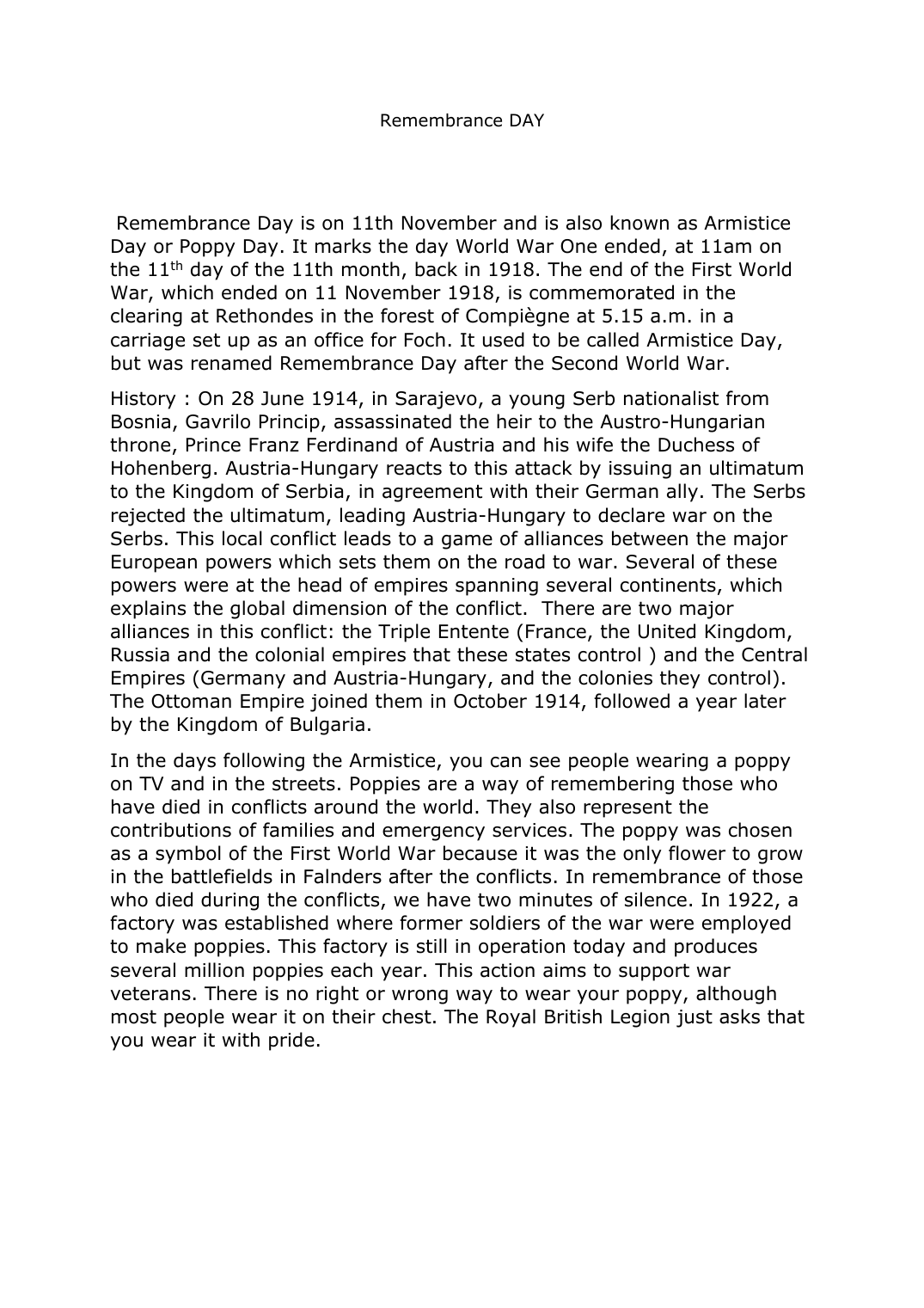Remembrance day
Publié le 20/03/2022

Extrait du document
«
Remembrance DAY
Remembrance Day is on 11th November and is also known as Armistice
Day or Poppy Day.
It marks the day World War One ended, at 11am on
the 11th day of the 11th month, back in 1918.
The end of the First World
War, which ended on 11 November 1918, is commemorated in the
clearing at Rethondes in the forest of Compiègne at 5.15 a.m.
in a
carriage set up as an office for Foch.
It used to be called Armistice Day,
but was renamed Remembrance Day after the Second World War.
History : On 28 June 1914, in Sarajevo, a young Serb nationalist from
Bosnia, Gavrilo Princip, assassinated the heir to the Austro-Hungarian
throne, Prince Franz Ferdinand of Austria and his wife the Duchess of
Hohenberg.
Austria-Hungary reacts to this attack by issuing an ultimatum
to the Kingdom of Serbia, in agreement with their German ally.
The Serbs
rejected the ultimatum, leading Austria-Hungary to declare war on the
Serbs.
This local conflict leads to a game of alliances between the major
European powers which sets them on the road to war.
Several of these
powers were at the head of empires spanning several continents, which
explains the global dimension of the conflict.
There are two major
alliances in this conflict: the Triple Entente (France, the United Kingdom,
Russia and the colonial empires that these states control ) and the Central
Empires (Germany and Austria-Hungary, and the colonies they control).
The Ottoman Empire joined them in October 1914, followed a year later
by the Kingdom of Bulgaria.
In the days following the Armistice, you can see people wearing a poppy
on TV and in the streets.
Poppies are a way of remembering those who
have died in conflicts around the world.
They also represent the
contributions of families and emergency services.
The poppy was chosen
as a symbol of the First World War because it was the only flower to grow
in the battlefields in Falnders after the conflicts.
In remembrance of those
who died during the conflicts, we have two minutes of silence.
In 1922, a
factory was established where former soldiers of the war were employed
to make poppies.
This factory is still in operation today and produces
several million poppies each year.
This action aims to support war
veterans.
There is no right or wrong way to wear your poppy, although
most people wear it on their chest.
The Royal British Legion just asks that
you wear it with pride..
»
↓↓↓ APERÇU DU DOCUMENT ↓↓↓















